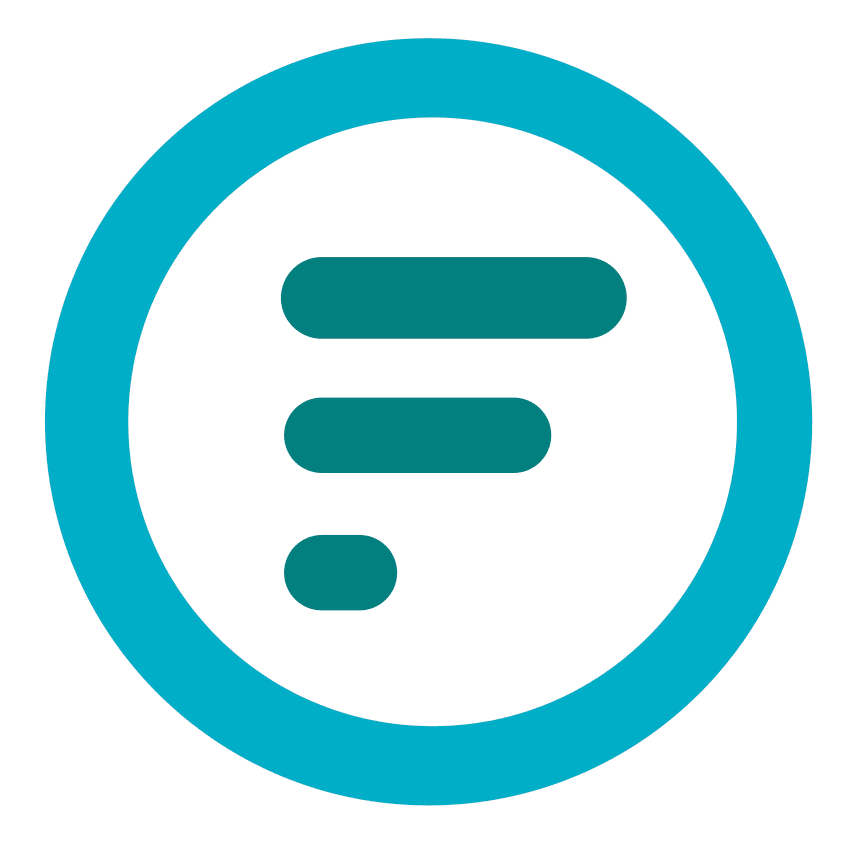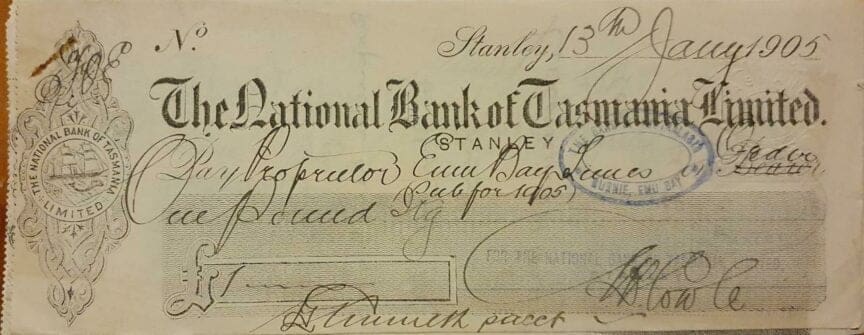Cheques are being phased-out this year by many banks, including First Option. If you currently write cheques, now is a good time to look into how electronic tools like PayID, Osko and PayTo will replace cheques from 1 July, 2023.
Cheques (or checks if you’re American) have been a key part of how many people do their banking for a long time, in fact a VERY long time. But changes globally now look likely to bring about the end of cheques as electronic banking alternatives, accelerated by the COVID-19 pandemic, bring paper cheques towards an inevitable retirement.
What is a cheque?
A cheque is officially a negotiable financial instrument: it’s a document (usually a slip of paper) which promises payment of a specific amount of money to a person who has been named on the document by the person who wrote it. Both the drawer (the person writing the cheque) and payee (the person cashing it) can be ‘natural persons’ (people) or ‘legal entities’ such as a business or organisation.
How old?
Old. Very old. Sometime between 321BC and 185BC a document called an Adesha, usually written on a clay tablet, was used in the Mauryan Empire (modern India). The precursor to the modern cheque, an Adesha was written by a merchant upon purchase of goods to be presented by the seller to a third party in order to receive payment.
In the 1st Century BC, the Romans began using a system they called ‘praescriptiones’ (note: this was very different to a Roman ‘proscription’ which was a posted notice listing details of a Roman citizen declared an outlaw, and whose goods had been confiscated and their sons and grandsons forever barred from public office. Rewards were offered to anyone killing the proscribed.) Praescriptiones, however, were promissory notes – a short document promising to pay someone for a product or service.
In 2017 excavations in London for Bloomberg’s new headquarters discovered a trove of Roman documents including a praescriptione written on a wooden tablet on January 8th AD57 which promised that… “I, Tibullus, the freedman of Venustus have written and say that I owe Gratus, the freedman of Spurius, 105 denarii from the price of merchandise which has been sold and delivered …”
During the Tang dynasty the Chinese used ‘feiquan’ or ‘flying money’ which was a two-part financial document enabling merchants to deposit their profits at a regional office of the government and recover it when they were back in the capital.
Check, please?
Muslim merchants in the ancient world (around the 3rd Century AD) often travelled long distances and for long times transporting their products. Having to carry coins would have been both a nuisance and a significant risk of robbery. Instead, they used a system of ‘letters of credit’ known as čak’s which enabled a trader to obtain money in different cities or countries to where they started their journey, receiving payment on delivery. The name čak (pronounced ‘shaak’) became check, or cheque in Australia and the UK.
An unlikely early European ‘bank’, the warrior monks known as the Knights Templar operated a service which included an early form of travellers or travellers’ cheque. A pilgrim (or crusader) could deposit cash or valuables at the Temple Church in London (actually London’s first bank, consecrated in 1185) then withdraw against in Jerusalem. The letters of credit issued by the knights included coded identifying information about the bearer which made it very difficult for someone else to ‘cash’ the cheque. Their service expanded over time to include charter houses across Europe and in the Middle East operated by the Templars, who were more properly named The Poor Fellow-Soldiers of Christ and of the Temple of Solomon. But they were far from poor…
Amsterdam in the sixteenth century was a major international shipping and trading hub. For safety, people began depositing their money with Dutch “cashiers” who held it for them for a fee and over time those cashiers agreed to pay the money deposited by one person directly to another, based on the depositor’s written order or “note” to do so.
Peak checking
In 1850’s America the use of checks (not ‘cheques’ in America) became the primary tool of financial exchange, and the success of checks created a new problem: banks just couldn’t keep up with the volume of checks being written, sending their porters out to other banks to clear checks and settle accounts carrying bags of money and a ledger book. It was wildly inefficient, with porters from all the different banks crossing the cities daily. By the 1880s ‘clearinghouses’ had been established as places where representative from all the banks would meet and settle their accounts rather than going from bank to bank.
By the early 1950s, Americans were writing more than 28 million checks a day; the equivalent of every American writing one check every week. Sorting and processing checks was still done by hand and each transaction took multiple people more than two days to finalise. With the backlog increasing, the volumes of checks being written became overwhelming: there were up to 69 million checks being processed in the US every day!
The banks looked to computers to help them cope.
In 1959 a standard was introduced for including machine-readable characters (Magnetic Ink Character Recognition or MICR) which enabled computers to scan and process checks, speeding up the process considerably and paving a path for the ‘peak check period’.
By 1979, 86% of all payments were made by check and by 1995, 49.5 billion checks were written annually.
Technology takes over
In the US in 2004 The Check Clearing for the 21st Century Act enabled the recipient of a check to create a digital copy and have it processed electronically, without the need for the piece of paper. This was a big step forward for convenience and speed and accelerated the acceptance of electronic payments. By the end of the 2000s checks were still the most popular form of payment… but cards and electronic transfers were catching up fast, boosted by the fact that checks were experiencing high levels of fraudulent activity.
During the height of the COVID-19 pandemic the Reserve Bank of Australia signalled the end of cheques may be fast approaching with consumers shunning most physical forms of payment and looking for touchless, instant alternatives. Australian consumers have been shifting towards electronic payments for years, but the RBA assistant governor Michele Bullock said in a speech in 2021 that COVID-19 probably triggered permanent changes in how people use money, in fact the value of cheque payments in Australia collapsed by 40 per cent compared with a year earlier.
A study by the RBA found cheques were six times more expensive for banks to process, per transaction, than card payments and this doesn’t include the costs for the person writing the cheque, or for the receiver to present the cheque. Not to mention additional costs for postage, dishonour fees etc.
“Is this suggesting the end of the cheque system? I think it may well be,” Ms Bullock said.
eBanking
Of course it wouldn’t be possible to consider shutting down paper cheques if there weren’t already better alternatives available. The proliferation of plastic payment cards (credit and debit) fed peoples’ appetite for a convenient and safe cashless way to pay for goods and services. Technology evolved to include ‘tap-and-go’ payments, BPay for bills, eftpos for shopping and virtual cards sitting secure in our digital wallets on our mobile phones.
Behind the scenes Australian banks under the guidance of the RBA have been developing the NPP (New Payments Platform) which includes Osko instant money transfers, PayID to replace account numbers and BSBs for secure transactions and PayTo which will provide a secure electronic framework for businesses to automatically charge customers for services like monthly subscriptions and regular bills.
For information on First Option’s digital banking services, click here.
For help setting up your own PayID or one-time passwords to make electronic transfers, click here.
Or just call our friendly Member Services team on 1300 855 675 if you need information or advice on transitioning from writing your cheques to using electronic transfers.
Cheque facts
- A cheque is really just a slip of paper that directs a bank to give the holder an amount of money from the bank account of a person who wrote the slip.
- Cheques are required to have details of the drawer’s bank account number, the person the money is to be given to, the bank that issued the slip, and the amount of money to be given.
- ‘Cheque’ is a British English term, and it is known in the United States as a ‘check’, and it is formally considered to be a type of ‘bill of exchange’ although they were originally known as ‘drawn notes’.
- Cheques usually expire after a certain time frame ranging from 6 months to 15 months, if they have not been banked or cashed.
- Cheques are commonly obtained in a booklet form, generally with pre-printed details of the drawer, a practice that emerged in the early 1800s.
- With the introduction of more practical, efficient and cost-effective technology, cheque use is already defunct in some countries.
- Cheques are usually smaller than a standard size piece of paper such as A4, although the largest one issued spanned 12 x 25 metres


